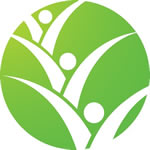The integration of gender and social inclusion in the OneCGIAR TAFSSA portfolio
The post A spice, not a topping: Social inclusion and gender integration in the TAFSSA portfolio appeared first on IFPRI South Asia Office.
Source: IFPRI South Asia Office
IFPRI Blog: Introducing the Women’s Empowerment Metric for National Statistical Systems (WEMNS)
The global commitment to reaching Sustainable Development Goal (SDG) 5, achieving gender equality and empowering all women and girls, is only growing stronger. For instance, there has been tremendous growth in the number of metrics assessing women’s em... Source: IFPRI Malawi: Malawi Strategy Support Program
EXAMINING THE GENDER DIGITAL DIVIDE: A Case Study from Rural Nigeria
Rural Nigeria, with its diverse cultural and socio-economic landscapes, presents unique challenges when it comes to digital inclusion. Traditional gender roles, limited educational opportunities, inadequate infrastructure, and sociocultural norms often combine to create barriers that disproportionately affect women’s access to digital technologies. As a result, women in rural areas face significant challenges in acquiring digital […] Source: Gender, Climate Change, and Nutrition Integration Initiative (GCAN)
EXAMINING THE GENDER DIGITAL DIVIDE: A Case Study from Rural Bangladesh
Women farmers in Bangladesh face several challenges when it comes to accessing technology and information, and this limits their ability to improve their agricultural productivity and enhance their livelihoods. The gendered digital divide is a significant contributor to inequities in agriculture and has important implications for women’s empowerment. Lack of access to information affects their […] Source: Gender, Climate Change, and Nutrition Integration Initiative (GCAN)
IFPRI Blog: ‘Dirty laundry is washed at home’: Increasing disclosure of violence against women and girls through self-administered surveys
Violence against women and girls (VAWG) is a persistent global problem. Physical and/or sexual intimate partner violence alone affects over one in four women, while rates of violence against girls often surpass 50% in the home, at school and in public ... Source: IFPRI Malawi: Malawi Strategy Support Program
- « Previous Page
- 1
- …
- 5
- 6
- 7
- 8
- 9
- …
- 31
- Next Page »
